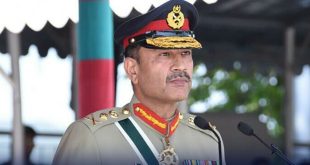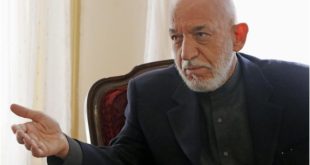Byt Rajkumar Singh
The initiative for establishing a regional cooperation association was taken in 1977 by Zia-ur-Rehman, the then president of Bangladesh.” It was with the yearning to bring some measure of stability and peace, and to improve the subhuman conditions of eternal poverty and misery” of new born Bangladesh that President had mooted the idea of regional cooperation in the immediate surroundings. Inspired by the idea of the President who had also toured India, Pakistan, Nepal and Sri Lanka in 1977, the Government of Bangladesh circulated a working paper, in 1980 titled” Regional Cooperation in South Asia” and advocated regional cooperation in economic, technical, scientific, social, cultural and educational fields. It also suggested that meetings at Foreign Secretary-level should examine prospects of regional cooperation. Consultative and preparatory in this direction had been done between 1977-1981 and proposal was formally submitted to the concerned government in May 1980 by President Rehman. It was formally initiated in April 1981 when a meeting of the foreign secretaries of seven South Asian States was held in Colombo. Six more such meetings were held in other capitals.
Establishment of SAARC
Further development in this regard was made in August 1983 in a Foreign Minister’s meeting in New Delhi. It adopted An Integrated Programme of Action and it was announced through the New Delhi Declaration. The development elevated the process from the official to the political level. It was followed by the Foreign Minister’s meetings held at Male in July 1984, and Thimpu in May 1985. During negotiations, it was agreed that the SAARC would actively try for greater regional cooperation on the basis of sovereign equality of States, protection on the basis of territorial integrity, and non-interference in the internal affairs of each other. The cooperation was likely to grow in the economic social and cultural spheres. In the final phase, the Heads of State or Government met at the first SAARC Summit in Dhaka on 7-8 December 1985 and decided to establish the South Asian Association for Regional Cooperation. It was a historic event and signified the culmination of the process that began as early as 1978-1979 with the consultations of late President Zia-Ur-Rehman of Bangladesh.
Formation of SAARC is an expression of efforts to not only cement ties among South Asia States in diplomatic, social, economic and other fields but also to promote collective self-reliance and to improve the quality of the life for the South Asians.The principles behind this regional organisation, as defined in its Charter are: (a) Regional cooperation through SAARC shall be based on mutual respect for the principles of sovereign equality, territorial integrity, political independence, non-interference in internal affairs of other states and mutual benefit; (b) Such cooperation shall not be a substitute for bilateral and multilateral cooperation but, shall complement them; and (c) Such cooperation shall not be inconsistent with bilateral and multi-lateral obligations. As per the principles several objectives have been enshrined in the Charter of the SAARC. To attain these objectives, seven countries of South Asia decided to launch a cooperative regional organisation and soon developed an understanding to apply to a step-by-step collaborative approach.
Institutional framework
Like other bodies, the SAARC has also established an institutional framework within which different level meetings take place at regular intervals, and within which a wide array of institutions, working groups, and so on, have been set up to discuss the feasibility and modalities of cooperation among the member states. Institutionalisation of SAARC would definitely strengthen the regional identity of South Asia and promote community formation. Contacts and transaction envisaged under its programmes would also contribute to the development of the South Asian System. Economic developments, which is the heart of the SAARC, would primarily be a step-by-step and incremental process for two reasons. Firstly, the smaller states need to carefully study the impact of extended economic cooperation with India both on their economic structures as well as on their political autonomy. Secondly, smaller states in the system wish to institutionalise cooperation based on consensus as a principle and guide to their regional economic diplomacy.
The institutional involvement of SAARC is based on direct involvement of heads of states or governments, foreign ministers and foreign secretaries of all the Member-Nations. It has developed among the South Asian states, mutual understanding and tolerance. It would also help reduce tensions and a overall character of the system would emerge in the process. In the first ten years of its formation the SAARC has made considerable progress in terms of institutionalisation. Rules governing its working procedures have been laid down systematically and its various meetings at the levels of expert committees, secretaries, ministers and summits have taken place fairly regularly. Though an elaborated programme of action has been chalked out to advance regional cooperation in various areas, not much has been achieved except in the area of trade.
Initial successes
Initially the activities of the SAARC were limited to areas such as health, population, meteorology, telecommunication, sports, culture etc. A significant development in this field was made at its summit held in December 1988 in Islamabad. It emphasised the need for concrete and result-oriented activities within the framework of SAARC to include trade. Further at its sixth summit held in Colombo in December 1991, Heads of State declared their commitment to the liberalization of trade in the region through a step-by-step approach in such a manner that countries in the region share benefits of trade expansion equitably. An Agreement on SAARC Preferential Trading Arrangement (SAPTA) was signed in Dhaka in April 1993. It envisaged the creation of a Preferential Trading Area among the SAARC members and also provided a legal framework for liberalization. Some achievements were noticed in 1998 when as a result of the third round of negotiations tariff concessions were offered on 3456 tariff lines. It, however, failed to pick up intra-regional trade in South Asia as done in other regional economic groupings.
In order to promote the trade among member-states the SAARC Council of Ministers met in New Delhi in December 1995 and emphasised that expression of political will by member states was imperative for the realization of South Asian Free Trade Area (SAFTA). The Framework Agreement on it was signed at the twelfth Summit held in Islamabad. The Government of India, in the last week of December 2005, approved the SAFTA and paved a way for its formal launching on 1 January 2006. Now it can be hoped that tariffs would be reduced within the stipulated timeframe of 2016 by all the participating countries. Especially openness to trade and investment would lead to development and reduce poverty and backwardness of the region at large.
The writer is Dr.Rajkumar Singh Professor and Head P.G.Department of Political Science BNMU, West Campus P.G.Centre, Saharsa-852201. Bihar, India. [email protected]
 Afghanistan Times
Afghanistan Times



